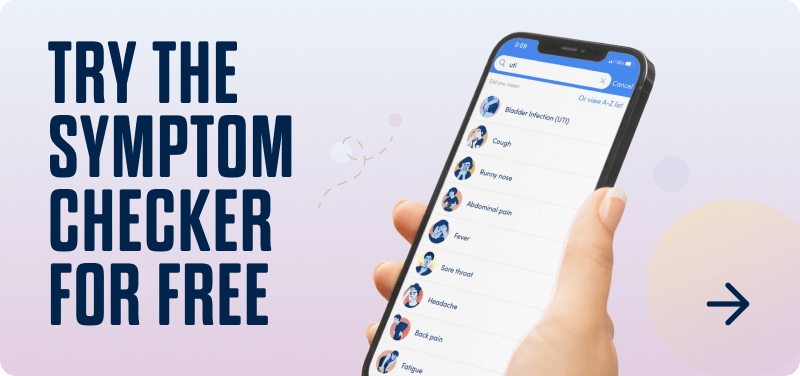If you’ve ever had a pounding headache accompanied by nausea, vomiting, or sensitivity to light and sound, you may suffer from migraine headaches.
Migraines are common, but they can be severe and persistent, so it’s important to get properly diagnosed by a doctor, who can help you find a treatment plan that alleviates your symptoms.
From preventative medications to drugs you take when you have a headache, there are many options for treating migraines.
One example is zolmitriptan, also called Zomig or Zomig ZMT, which is a prescription drug in a class called selective serotonin receptor agonists or triptans.
Zolmitriptan can relieve migraine symptoms, but it may also cause side effects or interact with other medications.
If you get migraines, your doctor can help you determine whether zolmitriptan is a good option for you.
In this article, I’ll explain what zolmitriptan is and how to use it.
I’ll also explore how fast it works, its side effects, and drug interactions with zolmitriptan. Finally, I’ll cover precautions before taking it, alternatives to zolmitriptan, and when to see a doctor.
Zolmitriptan Dosage
There are several triptan drugs used to treat migraines.
Rather than preventing migraine attacks, triptans such as zolmitriptan reduce migraine pain and other symptoms by narrowing blood vessels around the brain and stopping pain signals from being sent to the brain.
Triptans also stop your body from releasing chemicals that can contribute to migraine symptoms, such as headaches, nausea, and sensitivity to light and sound.
Each triptan is dosed differently, and your doctor will help you determine an appropriate dose depending on factors such as your age, weight, and the severity of your migraines.
Zolmitriptan comes in tablet and orally disintegrating forms, along with a nasal spray.
The following is a general guide to zolmitriptan dosage.
Oral tablets
- Adults: Take 1.25 or 2.5 milligrams (mg), depending on your doctor’s instructions. If the migraine returns, you can take another dose two hours later. Do not exceed more than 5 mg in a single dose or 10 mg in a 24-hour period.
- Children: Speak to your child’s doctor. Zolmitriptan is generally not recommended for children.
Orally disintegrating tablets
- Adults: Place 2.5 mg on top of your tongue and allow it to dissolve. If your migraine returns, you can take another dose after two hours. Do not exceed 5 mg in a single dose or 10 mg in a 24-hour period.
- Children: Speak to your child’s doctor. Zolmitriptan is generally not recommended for children.
Nasal spray
- Adults and children 12 years and older: Spray 2.5 milligrams (mg) into one nostril. Spray 2.5 or 5 mg into the nostril if your migraine pain returns or doesn’t go away, but wait two hours since the last dose. Do not use more than 10 mg of zolmitriptan in 24 hours.
- Children younger than 12: Speak to your child’s doctor. Zolmitriptan nasal spray is generally not recommended for children younger than 12.
How to Use Zolmitriptan
How you use zolmitriptan depends on your dosage and the form you’re prescribed.
If you have zolmitriptan tablets, swallow one with a glass of water.
Tablets can be cut in half if needed.
Dissolve orally disintegrating tablets on top of your tongue and swallow.
If taking nasal spray, blow your nose first.
With your head upright, close one nostril with a finger, insert the nose piece into the open nostril, and breathe in as you spray.
Keep your head back and breathe through your mouth for 10 seconds.
Each nasal spray is a single dose.
Throw it away after using it.
No matter what type you use, it’s best to take zolmitriptan as soon as you notice a migraine headache.
If you experience a sensory disturbance called an aura before a migraine, wait until the headache pain arrives to take zolmitriptan.
It may help to lie down in a dark, cool, quiet room after taking zolmitriptan.
Always follow your doctor and pharmacist’s instructions when you take zolmitriptan.
Don’t take it for other types of headaches, such as tension headaches, and avoid changing or increasing your dosage without talking to a healthcare provider first.
How Fast Does Zolmitriptan Work?
Zolmitriptan, like other triptans, can be an effective way to treat migraine headaches.
How long it takes for zolmitriptan to work can vary from person to person.
Some studies suggest people’s migraine symptoms improve or go away completely after two hours of taking the medication.
If your migraine doesn’t go away after a dose of zolmitriptan, or it goes away and then comes back, you can take a second dose two hours after the first one.
Do not take more than 10 mg of zolmitriptan in a 24-hour timeframe.
Zolmitriptan Side Effects
Like all prescription drugs, zolmitriptan can cause side effects.
Some effects are mild, while others warrant medical attention.
The following side effects are common after taking zolmitriptan:
- Sleepiness
- Warm or cold sensation
- Dizziness
- Lightheadedness
- Lack of strength
- Sensation of spinning
- Tightness in your chest
- Dry mouth
- Nausea and/or vomiting
In rare cases, zolmitriptan may cause adverse effects.
See or speak to a doctor right away if you experience any of the following severe side effects after taking zolmitriptan:
- Severe chest pain
- Severe heaviness or pressure in your chest or neck
- Severe abdominal pain
- Fast or irregular heartbeat
- Fever or chills
- Hives or skin rash
- Puffy face
- Difficulty breathing
- Changes in your facial skin color
- Lower back pain
- Side pain
- Pain with urination
- Weakness
What Happens When You Overdose
Taking too much of any medication can be dangerous.
To avoid an overdose, always follow your doctor’s instructions and the product label when you take zolmitriptan.
Too much zolmitriptan can increase your risk of developing adverse side effects.
Taking more zolmitriptan than recommended, especially with other drugs that increase serotonin, can result in a potentially serious condition called serotonin syndrome.
The following signs may indicate a zolmitriptan overdose:
- Excessive drowsiness
- Faintness
- Rapid or irregular heartbeat
- Vomiting
- Shortness of breath
- Heaviness or pain in the chest, throat, neck, or jaw
If you think you may have taken too much zolmitriptan, call 911 or go to an emergency department right away.
You can also call poison control 24/7 at (800) 222-1222.
What Happens When You Miss a Dose
Like other triptans, zolmitriptan is an acute migraine drug.
That means you should take it as needed to improve migraine symptoms you already have.
You shouldn’t take it every day to prevent migraines.
Zolmitriptan works best when taken as soon as you notice a migraine.
You can take it again after two hours if your migraine doesn’t go away or comes back.
Don’t exceed 10 mg of zolmitriptan in one 24-hour period unless advised otherwise by a healthcare provider.
Drug Interactions with Zolmitriptan
Certain drugs can negatively interact with zolmitriptan, causing unwanted side effects.
Before you take zolmitriptan, tell your doctor about all the medications and supplements you take.
Medications that increase your body’s serotonin can increase your risk of developing serotonin syndrome.
If you take a selective serotonin reuptake inhibitor (SSRI) or a serotonin norepinephrine reuptake inhibitor (SNRI), which are antidepressant medications, tell your healthcare provider.
Other drugs that increase serotonin, such as supplements like St. John’s Wort and drugs like ecstasy or MDMA, should be avoided.
What to Avoid When Taking Zolmitriptan
Don’t take zolmitriptan if you’ve taken any of the below drugs in the last 24 hours:
- Other migraine drugs, including triptans or ergotamines
- Monoamine oxidase (MAO) inhibitors
Do not take zolmitriptan if you’ve had an allergic reaction to a triptan medication before, or if you’re allergic to any ingredients in zolmitriptan.
It’s also best to avoid alcohol use when you take zolmitriptan.
Alcohol consumption can worsen migraines or make migraines worse.
If you take zolmitriptan and it makes you feel dizzy, lightheaded, or tired, then avoid driving or operating heavy machinery while you’re taking the medication.
Lastly, don’t take zolmitriptan more than 10 days each month because overuse can cause more headaches.
If you need migraine medication frequently, consult with your doctor about a preventative medication.
Your doctor may also want to examine you and rule out other conditions.
Precautions Before Taking Zolmitriptan
Zolmitriptan may not be safe or suitable for certain populations; for example, it’s not known whether this drug is appropriate for pregnant or breastfeeding individuals.
Speak to your doctor if you’re planning to get pregnant soon or currently pregnant or breastfeeding.
Elderly individuals, who may be at a higher risk of certain comorbidities, should also use zolmitriptan with caution.
Risk Factors
Certain medical risk factors are contraindicated for zolmitriptan.
Speak to your doctor about zolmitriptan if you have any of the following conditions, as the drug may not be safe or appropriate for your:
- A personal or family history of heart disease
- History of stroke
- Uncontrolled hypertension (high blood pressure)
- Hemiplegic or basilar migraines
- Problems with blood circulation
- Liver problems
- Obesity
- High cholesterol
- Smoking
Zolmitriptan Alternatives
If zolmitriptan doesn’t relieve your migraines — or you can’t take zolmitriptan due to a medical condition or drug interaction — your doctor can help you identify a drug to prevent or treat your migraines.
The following over-the-counter drugs may help with migraine pain:
- Ibuprofen (Advil and Motrin)
- Naproxen (Aleve)
- Aspirin
- Acetaminophen (Tylenol)
- Excedrin, which contains aspirin, acetaminophen, and caffeine
Another type of medication in the same drug class may also help your migraine.
Other triptans approved by the FDA as acute migraine treatment include:
- Sumatriptan (Imitrex, Imitrex Statdose, Sumavel DosePro, Alsuma, Zembrace SymTouch)
- Eletriptan (Relpax)
- Naratriptan (Amerge)
- Rizatriptan (Maxalt, Maxalt Mlt)
- Frovatriptan (Frova)
- Almotriptan (Axert)
Calcitonin gene-related peptide (CGRP) antagonists are a newer drug class used to treat acute migraine.
Examples of CGRP antagonists for migraines include:
- Ubrogepant (Ubrelvy)
- Rimegepant (Nurtect ODT)
If acute medications don’t help, or you get frequent migraines, your doctor may recommend a preventative migraine medication, such as an antidepressant, CGRP monoclonal antibodies, beta blockers, or calcium channel blockers.
When to See a Medical Provider
As common as they are, migraines can be hard to manage.
See a doctor if you have persistent migraines or if your migraines don’t respond to zolmitriptan or other drugs.
Your healthcare provider can help you find medication that either prevents or treats your migraine symptoms.
If you take zolmitriptan but you’re experiencing unwanted side effects, make an appointment with your doctor. It’s also important to speak with a healthcare provider if you start taking a new medication (including an herbal supplement) that could interact with zolmitriptan.
Call 911 or go to the emergency department if you think you may be experiencing an allergic reaction, heart attack, stroke, or serotonin syndrome after you take zolmitriptan.
How K Health Can Help
Did you know you can get affordable primary care with the K Health app? Download K Health to check your symptoms, explore conditions and treatments, and, if needed, text with a clinician in minutes. K Health’s AI-powered app is based on 20 years of clinical data.
Frequently Asked Questions
K Health has strict sourcing guidelines and relies on peer-reviewed studies, academic research institutions, and medical associations. We avoid using tertiary references.
-
A comparative trial of zolmitriptan and sumatriptan for the acute oral treatment of migraine. (2000).
https://pubmed.ncbi.nlm.nih.gov/10759911/ -
Migraine Medications. (2021)
https://www.ncbi.nlm.nih.gov/books/NBK553159/ -
Serotonin Syndrome. (2013).
https://www.ncbi.nlm.nih.gov/pmc/articles/PMC3865832/ -
Zolmitriptan for acute migraines in adults. (n.d.)
https://www.cochrane.org/CD008616/SYMPT_zolmitriptan-acute-migraine-attacks-adults

 Medically reviewed
Medically reviewed

